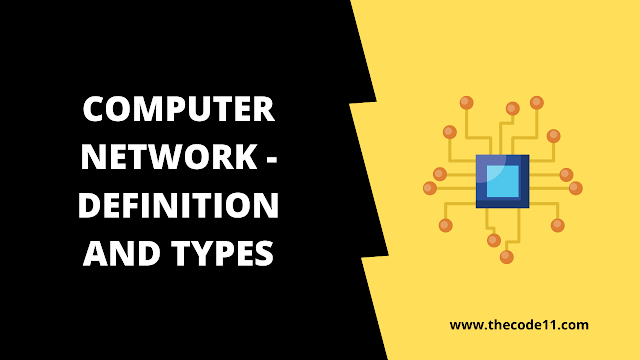In this tutorial, you are going to learn about Computer Network, Data Transfer Mode, Elements used in Computer Network and its types.
Computer Network
A collection of computers (or computer like devices) that are able to communicate with each other through some medium, using hardware and software. Two computers are said to be connected, if they are able to exchange information or able to communicate with each other.
Every network includes elements to enable data transfer or sharing are given below.
- Atleast two computers (or computer like devices)
- Network interfaces
- A connection medium
- Operating system, strategies, algorithms and protocols
Data Transfer Modes
There are mainly three modes of data transfer:
- Simplex - Data transfer only in one direction, example: radio broadcasting.
- Half Duplex - Data transfer in both direction, but not simultaneously i.e., in one direction at a time e.g., talk back radio, CB radio (citizen band).
- Full Duplex or Duplex Data transfer in both directions, simultaneously. Example - Telephone.
Elements used in Computer Networks for Communication
Some basic elements which are using in communication systems of a computer network are given below:
- Data Source - Provides the data to transmit.
- Sender (Transmitter) - Converts data to signals for transmission.
- Data Transmission System - Transmits the data i.e. , converted in signals.
- Receiver - Converts received signals to data.
- Destination - Receives and uses incoming data.
- Node - A device with independent communication ability and unique network address.
- Protocol - A formal description, comprising rules and conventions defines the method of communication between networking devices.
Methods of Message Delivery (Casting)
A message can be delivered in the following ways:
- Unicast - One device sends message to the other to its address.
- Broadcast - One device sends message to all other devices on the network. The message is sent to an address reserved for this goal.
- Multicast - One device sends message to a certain group of devices on the network.
Types of Networks
The types of network based on their coverage areas are as given below:
LAN (Local Area Network) - LAN is privately owned network within a single building or campus. LANs can be small, linking as few as three computers, but often link hundreds of computers used by thousands of people (like in some IT office, etc.)
An arbitration mechanism is installed in LAN to decide, which machine will use the access, when more than one machines are requesting for communication. LAN are used for connecting personal computers, workstations, routers and other devices.
Their main characteristics are given below:
- Topology - The geometrical arrangement of the computers or nodes.
- Protocols - How they communicate.
- Medium - Through which medium.
MAN (Metropolitan Area Network) - A MAN covers a city. An example of MAN is cable television network in city.
WAN (Wide Area Network) - A wide area network or WAN spans a large geographical area often a country, Internet It is also known as network of networks. The Internet is a system of linked networks that are worldwide in scope and facilitate data communication services such as remote login, file transfer, electronic mail, World Wide Web and newsgroups etc.
This article on "Computer Network - Definition and Types" is contributed by Amal Kumar (Delhi University). If you like TheCode11, then do follow us on Facebook, Twitter and Instagram.

